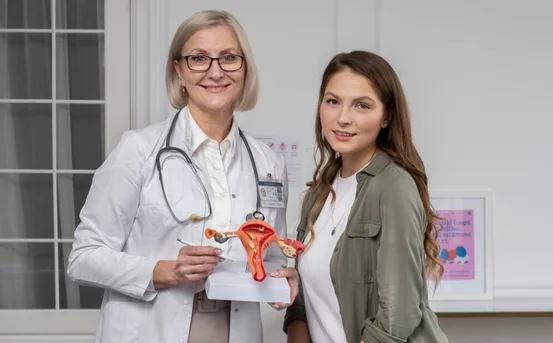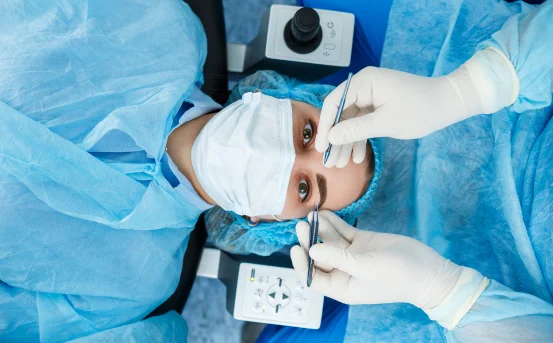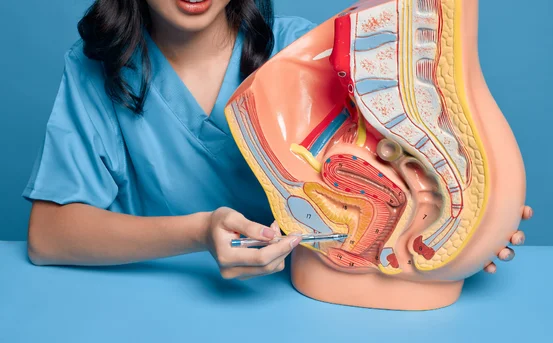Cardioversion therapy is a critical medical procedure used to restore a normal heart rhythm in individuals experiencing certain types of abnormal heartbeats, particularly atrial fibrillation (AFib), atrial flutter, or supraventricular tachycardia. It is a safe, effective, and often immediate intervention that can dramatically improve symptoms like palpitations, fatigue, dizziness, or shortness of breath.
In cardioversion, the heart’s rhythm is reset either through controlled electric shocks (electrical cardioversion) or with the use of antiarrhythmic medications (chemical or pharmacologic cardioversion). The goal is to restore a normal sinus rhythm, allowing the heart to beat efficiently and effectively. This can result in an immediate improvement in symptoms and overall heart function, especially for those struggling with long-standing or symptomatic arrhythmias.
What is Cardioversion Therapy?
Cardioversion therapy is a medical treatment aimed at converting an irregular heart rhythm back to a normal sinus rhythm. It can be done through :-
Understanding the treatment and causes of cardioversion therapy is essential for patients experiencing heart rhythm issues. By exploring the treatment and causes of cardioversion therapy, individuals can make informed choices about their health.
-
Electrical Cardioversion :- A procedure where controlled electric shocks are delivered to the heart using a defibrillator while the patient is under sedation.
-
Pharmacologic (Chemical) Cardioversion :- The use of medications to restore normal heart rhythm.
This therapy is commonly recommended when a patient experiences persistent or symptomatic arrhythmias that do not resolve on their own or with initial medical management.
Many patients seek clarity on the treatment and causes of cardioversion therapy to make informed decisions.
Common Causes That Lead to Cardioversion
Cardioversion is usually considered when the heart develops an arrhythmia, most often :-
Identifying the treatment and causes of cardioversion therapy is crucial for managing arrhythmias effectively. Recognizing the treatment and causes of cardioversion therapy is vital for effective arrhythmia management, allowing patients to seek the best options available.
- Atrial Fibrillation (AFib) :- Atrial fibrillation is the most common cause of cardioversion. In AFib, the upper chambers of the heart (atria) beat irregularly and out of coordination with the lower chambers (ventricles). This disrupts blood flow and increases the risk of stroke.
- Atrial Flutter :- Similar to AFib, atrial flutter is another type of arrhythmia where the atria beat rapidly but regularly. It can cause symptoms like chest discomfort and fatigue and may require cardioversion for symptom relief.
- Supraventricular Tachycardia (SVT) :- SVT involves episodes of abnormally fast heartbeats that originate above the ventricles. These can be sudden and symptomatic, prompting immediate treatment.
- Ventricular Tachycardia (Stable) :- In stable ventricular tachycardia (a fast heart rhythm starting in the ventricles), cardioversion may be used if the patient is not in immediate danger but still needs rhythm correction.
Other Triggers
Other contributing factors that may cause arrhythmias requiring cardioversion include :-
Understanding the treatment and causes of cardioversion therapy helps in recognizing potential triggers for arrhythmias and can guide patient decisions.
-
Heart disease or previous heart attacks
-
High blood pressure (hypertension)
-
Thyroid disorders (especially hyperthyroidism)
-
Alcohol abuse or binge drinking (“holiday heart syndrome”)
-
Electrolyte imbalances
-
Chronic lung disease
-
Sleep apnea
When is Cardioversion Recommended?
The treatment and causes of cardioversion therapy should be discussed with your healthcare provider to tailor the approach. Doctors recommend cardioversion when :-
-
The patient has sustained or symptomatic AFib or flutter.
-
The irregular heartbeat is not self-correcting or responding to medication.
-
There’s a need to reduce stroke risk, improve cardiac function, or alleviate symptoms.
Cardioversion is generally scheduled as an elective procedure but may also be done urgently if symptoms are severe.
Types of Cardioversion Treatments
Exploring the treatment and causes of cardioversion therapy provides patients with comprehensive knowledge.
Electrical Cardioversion
This is the most common and effective method. Here’s what to expect :-
-
Preparation :- The patient is sedated with short-acting anesthesia to ensure no discomfort during the shock.
-
Procedure :- Electrodes are placed on the chest (and sometimes the back). A defibrillator delivers a synchronized electrical shock.
-
Duration :- The entire process takes around 30–60 minutes, including sedation and recovery time.
-
Effectiveness :- It has a success rate of up to 90% in restoring normal rhythm in AFib and flutter.
Pharmacologic Cardioversion
Certain antiarrhythmic drugs are administered either orally or intravenously to correct the heartbeat. These include :-
Learning about the treatment and causes of cardioversion therapy can empower patients in their healthcare journey. Patients should take time to learn about the treatment and causes of cardioversion therapy as it empowers them to engage actively in their care.
-
Amiodarone
-
Flecainide
-
Propafenone
-
Sotalol
It may be used alone or alongside electrical cardioversion to maintain rhythm after restoration.
Pre-Procedure Preparation
Prioritizing knowledge about the treatment and causes of cardioversion therapy is important for successful outcomes and patient confidence. Before undergoing cardioversion, your doctor will likely conduct a few tests, such as :-
-
Electrocardiogram (ECG) :- To identify the type of arrhythmia.
-
Transesophageal Echocardiogram (TEE) :- To check for blood clots in the heart, especially the left atrium.
-
Blood tests :- To assess thyroid levels and electrolytes.
-
Anticoagulant therapy :- Patients may be prescribed blood thinners like warfarin or DOACs (e.g., apixaban, rivaroxaban) for at least 3 weeks before cardioversion to reduce the risk of stroke.
Risks and Side Effects of Cardioversion
Awareness of the treatment and causes of cardioversion therapy can help mitigate risks associated with the procedure. While generally safe, cardioversion does carry some risks :-
- Blood Clots and Stroke :- If a clot dislodges during rhythm restoration, it may cause a stroke. This is why pre-procedure blood thinners are crucial.
- Skin Irritation or Burns :- Electrical shocks can cause minor burns or redness where the pads were applied.
- Arrhythmia Recurrence :- The heart may revert to an abnormal rhythm even after successful cardioversion. Maintenance medications and follow-ups are necessary.
- Side Effects from Sedation :- Mild nausea, grogginess, or confusion may occur temporarily after the sedative wears off.
Post-Procedure Recovery
Patients should inquire about the treatment and causes of cardioversion therapy during their consultations.
- Observation :- You’ll be monitored for a few hours post-cardioversion to ensure your heart remains stable and your sedation wears off safely.
- Home Care :- You may feel tired or slightly sore, but most people resume normal activities within a day or two.
Follow-up Care
Doctors usually recommend :-
-
Continued anticoagulation for at least 4 weeks post-cardioversion
-
Regular ECGs or Holter monitoring
Follow-up discussions about the treatment and causes of cardioversion therapy can aid in long-term heart health strategies.
-
Lifestyle changes like weight loss, sleep apnea treatment, or reducing alcohol intake
Long-Term Management
Cardioversion is often just one part of a broader strategy to manage arrhythmia. Other long-term options include :-
-
Antiarrhythmic medications to maintain rhythm
-
Rate control medications like beta-blockers or calcium channel blockers
-
Catheter ablation to destroy arrhythmia-causing heart tissue
-
Pacemaker or ICD (Implantable Cardioverter-Defibrillator) in more severe or recurring cases
Conclusion
Cardioversion therapy is a highly effective treatment for restoring a normal heart rhythm in individuals suffering from certain types of arrhythmia. Whether electrical or chemical, the procedure can significantly improve quality of life, reduce symptoms, and prevent complications like stroke and heart failure. Understanding the treatment and causes of cardioversion therapy, preparation steps, risks, and recovery can empower you or your loved ones to make informed decisions and achieve better heart health.
In conclusion, knowledge about the treatment and causes of cardioversion therapy is essential for patients to achieve optimal heart health.























